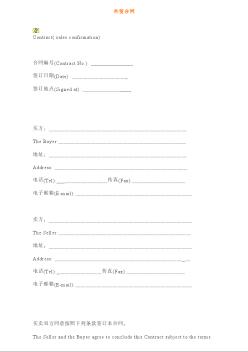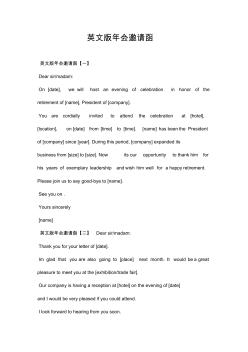平面动力系统的若干经典问题 : 英文版
平面动力系统的若干经典问题 : 英文版基本信息
| 书 名 | 平面动力系统的若干经典问题 | 作 者 | 刘一戎,李继彬,黄文韬 |
|---|---|---|---|
| 出版社 | 科学出版社 | 出版时间 | 2014-06 |
| ISBN | 9787030408433 | ||
封面
Planar Dynamical Systems:Selected Classical Problems
Preface
Chapter 1 Basic Concept and Linearized Problem ofSystems
Chapter 2 Focal Values, Saddle Values and SingularPoint Values
Chapter 3 Multiple Hopf Bifurcations
Chapter 4 Isochronous Center In Complex Domain
Chapter 5 Theory of Center-Focus and Bifurcation ofLimit Cycles at Infinity of a Class ofSystems
Chapter 6 Theory of Center-Focus and Bifurcationsof Limit Cycles for a Class of MultipleSingular Points
Chapter 7 On Quasi Analytic Systems
Chapter 8 Local and Non-Local Bifurcations ofPerturbed Zq-Equivariant HamiltonianVector Fields
Chapter 9 Center-Focus Problem and Bifurcations ofLimit Cycles for a Z2-Equivariant CubicSystem
Chapter 10 Center-Focus Problem and Bifurcations ofLimit Cycles for Three-Multiple NilpotentSingular Points
Bibliography
Index
封底
平面动力系统的若干经典问题 : 英文版造价信息
浅水波,非线性光学、电磁学、等离子物理、凝聚态物理、生物及化学、通讯等领域均存在非线性波运动。对其数学模型——波方程的解研究有重要价值。上世纪90年代,数学家发现了行波方程的非光滑的孤粒子解(peakon)、有限支集解(compacton)和圈解(loopsolution)等,为理解这些解,特别是非光滑解的出现,导致用动力系统的分支理论及方法对奇行波方程进行研究的新方向。本书介绍两类奇行波方程的研究的动力系统方法,及对大量数学物理问题的应用。
平面动力系统的若干经典问题 : 英文版常见问题
平面动力系统的若干经典问题 : 英文版文献

 英文版外贸合同(中英文对照版)
英文版外贸合同(中英文对照版)
外贸合同 Contract( sales confirmation) 合同编号(Contract No.): _______________ 签订日期(Date) :___________ 签订地点(Signed at) :___________ 买方:__________________________ The Buyer:________________________ 地址:__________________________ Address: _________________________ 电话(Tel):___________传真(Fax):__________ 电子邮箱(E-mail):______________________ 卖方:________________

 英文版会邀请函
英文版会邀请函
英文版年会邀请函 英文版年会邀请函【一】 Dear sir/madam: On [date], we will host an evening of celebration in honor of the retirement of [name], President of [company]. You are cordially invited to attend the celebration at [hotel], [location], on [date] from [time] to [time]. [name] has been the President of [company] since [year]. During this period, [company] expanded its business from [size] to [size].
《平面动力系统的若干经典问题(英文版)》介绍两类奇行波方程的研究的动力系统方法,及对大量数学物理问题的应用。
该书介绍平面动力系统定性理论有意义的研究进展。内容包括中心和等时中心问题、多重Hopf分支、平面等变向量场的局部和全局分支。这和Hilbert的第16个问题直接相关。《平面向量场的若干经典问题》可作为高等院校数学专业研究生的教材或教师的教学参考书,也可供相关专业的科研人员和工程技术人员参考。
Preface
1 Basic Concept and Linearized Problem of Systems
1.1 Basic Concept and Variable Transformation
1.2 Resultant of the Weierstrass Polynomial and Multiplicity of a Singular Point
1.3 Quasi—Algebraic Integrals of Polynomial Systems
1.4 Cauchy Majorant and Analytic Properties in a Neighborhood of an Ordinary Point
1.5 Classification of Elementary Singular Points and Linearized Problem
1.6 Node Value and Linearized Problem of the Integer—Ratio Node
1.7 Linearized Problem of the Degenerate Node
1.8 Integrability and Linearized Problem of Weak Critical Singular Point
1.9 Integrability and Linearized Problem of the Resonant Singular Point
2 Focal Values, Saddle Values and Singular Point Values
2.1 Successor Functions and Properties of Focal Values
2.2 Poincare Formal Series and Algebraic Equivalence
2.3 Linear Recursive Formulas for the Computation of Singular Point Values
2.4 The Algebraic Construction of Singular Values
2.5 Elementary Generalized Rotation Invariants of the Cubic Systems
2.6 Singular Point Values and Integrability Condition of the Quadratic Systems
2.7 Singular Point Values and Integrability Condition of the Cubic Systems Having Homogeneous Nonlinearities
3 Multiple Hopf Bifurcations
3.1 The Zeros of Successor Functions in the Polar Coordinates
3.2 Analytic Equivalence
3.3 Quasi Successor Function
3.4 Bifurcations of Limit Circle of a Class of Quadratic Systems
4 Isochronous Center In Complex Domain
4.1 Isochronous Centers and Period Constants
4.2 Linear Recursive Formulas to Compute Period Constants
4.3 Isochronous Center for a Class of Quintic System in the Complex Domain
4.3.1 The Conditions of Isochronous Center Under Condition C1
4.3.2 The Conditions of Isochronous Center Under Condition C2
4.3.3 The Conditions oflsochronous Center Under Condition C3
4.3.4 Non—Isochronous Center under Condition C4 and C1
4.4 The Method of Time—Angle Difference
4.5 The Conditions of Isochronous Center of the Origin for a Cubic System
5 Theory of Center—Focus and Bifurcation of Limit Cycles at Infinity of a Class of Systems
5.1 Definition of the Focal Values of Infinity
5.2 Conversion of Questions
5.3 Method of Formal Series and Singular Point Value of Infinity
5.4 The Algebraic Construction of Singular Point Values of Infinity
5.5 Singular Point Values at Infinity and Integrable Conditions for a Class of Cubic System
5.6 Bifurcation of Limit Cycles at Infinity
5.7 Isochronous Centers at Infinity of a Polynomial Systems
5.7.1 Conditions of Complex Center for System (5.7.6)
5.7.2 Conditions of Complex Isochronous Center for System (5.7.6)
6 Theory of Center—Focus and Bifurcations of Limit Cycles for a Class of Multiple Singular Points
6.1 Succession Function and Focal Values for a Class of Multiple Singular Points
6.2 Conversion of the Questions
6.3 Formal Series, Integral Factors and Singular Point Values for a Class of Multiple Singular Points
6.4 The Algebraic Structure of Singular Point Values of a Class of Multiple Singular Points
6.5 Bifurcation of Limit Cycles From a Class of Multiple Singular Points
6.6 Bifurcation of Limit Cycles Created from a Multiple Singular Point for a Class of Quartic System
6.7 Quasi Isochronous Center of Multiple Singular Point for a Class of Analytic System
7 On Quasi Analytic Systems
7.2 Reduction of the Problems
7.3 Focal Values, Periodic Constants and First Integrals of (7.2.3)
7.4 Singular Point Values and Bifurcations of Limit Cycles of Quasi—Quadratic Systems
7.5 Integrability of Quasi—Quadratic Systems
7.6 Isochronous Center of Quasi—Quadratic Systems
7.6.1 The Problem of Complex Isochronous Centers Under the Condition of C1
7.6.2 The Problem of Complex Isochronous Centers Under the Condition of C2
7.6.3 The Problem of Complex Isochronous Centers Under the Other Conditions
7.7 Singular Point Values and Center Conditions for a Class of Quasi—Cubic Systems
8 Local and Non—Local Bifurcations of Perturbed Zq—Equivariant Hamiltonian Vector Fields
8.1 Zq—Equivariant Planar Vector Fields and an Example
8.2 The Method of Detection Functions: Rough Perturbations of Zq— Equivariant Hamiltonian Vector Fields
8.3 Bifurcations of Limit Cycles of a 22— Equivariant Perturbed Hamiltonian Vector Fields
8.3.1 Hopf Bifurcation Parameter Values
8.3.2 Bifurcations From Heteroclinic or Homoclinic Loops
8.3.3 The Values of Bifurcation Directions of Heteroclinic and Homoclinic Loops
8.3.4 Analysis and Conclusions
8.4 The Rate of Growth of Hilbert Number H (n,) with n
8.4.1 Preliminary Lemmas
8.4.2 A Correction to the Lower Bounds of H (2k—1) Given in (Christopher and Lloyd, 1995)
8.4.3 A New Lower Bound for H (2k—1)
8.4.4 Lower Bound for H(3×2k—1—1)
9 Center—Focus Problem and Bifurcations of Limit Cycles for a Z2—Equivariant Cubic System
9.1 Standard Form of a Class of System (E3Z2)
9.2 Liapunov Constants, Invariant Integrals and the Necessary and Sufficient Conditions of the Existence for the Bi—Center
9.3 The Conditions of Six—Order Weak Focus and Bifurcations of Limit Cycles
9.4 A Class of (E3Z2) System With 13 Limit Cycles
9.5 Proofs of Lemma 9.4.1 and Theorem 9.4.1
9.6 The Proofs of Lemma 9.4.2 and Lemma 9.4.3
10 Center—Focus Problem and Bifurcations of Limit Cycles for Three—Multiple Nilpotent Singular Points
10.1 Criteria of Center—Focus for a Nilpotent Singular Point
10.2 Successor Functions and Focus Value of Three—Multiple Nilpotent Singular Point
10.3 Bifurcation of Limit Cycles Created from Three—Multiple Nilpotent Singular Point
10.4 The Classification of Three—Multiple Nilpotent Singular Points and Inverse Integral Factor
10.5 Quasi—Lyapunov Constants For the Three—Multiple Nilpotent Singular Point
10.6 Proof of Theorem 10.5.2
10.7 On the Computation of Quasi—Lyapunov Constants
10.8 Bifurcations of Limit Cycles Created from a Three—Multiple Nilpotent Singular Point of a Cubic System
Bibliography
Index
- 相关百科
- 相关知识
- 相关专栏
- 平面向量场的若干经典问题
- 平面吸气丝印机
- 平面对数螺旋天线
- 平面广告创意与设计
- 平面广告设计
- 平面最大倾斜线
- 平面构成基础教程
- 平面构成教程
- 平面构成:艺术设计专业基础教程
- 平面电机设计与控制
- 平面的最大斜度线
- 平面织带
- 平面设计基础教程:版式设计与文字编排
- 平面设计基础(第二版)
- 平面设计师就业实战大揭秘
- 平面设计师就业实践大揭秘
- 基于压电堆驱动器的喷嘴挡板式气体控制阀
- 磷铵技术改造五大磷肥工程的建议
- 以大豆油多元醇制备的硬质聚氨酯泡沫塑料的性能
- 逆变TIG焊机接触引弧电路的设计(引弧电路)
- 应用模糊数学理论对公路工程建设项目方案的综合评价
- 可替代现有隔热保温材料的新型材料
- 以贯穿项目为核心载体的建筑工程技术专业素材库建设
- 多逆变器太阳能光伏并网发电系统的组群控制方法
- 影响萘高效减水剂与普通硅酸盐水泥适应性的关键因素
- 在全县非煤矿山和危化企业安全生产工作会议上的讲话
- 中国工程造价咨询业的发展趋势
- 支持并行工程和智能CAPP的制造资源建模技术
- 中共重庆市委重庆市人民政府关于建设平安重庆的决定
- 智能建筑工程报警与电视监控系统前端设备的安装施工
- 在“建筑节能与居住舒适”专题技术交流会议上的讲话
- 以MSP430FW427为核心的远程数字水表设计